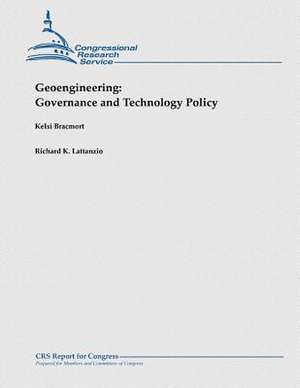Geoengineering
Autor Kelsi Bracmort, Richard K. Lattanzioen Limba Engleză Paperback
Preț: 100.81 lei
Nou
Puncte Express: 151
Preț estimativ în valută:
19.29€ • 20.19$ • 15.96£
19.29€ • 20.19$ • 15.96£
Carte disponibilă
Livrare economică 17-31 martie
Preluare comenzi: 021 569.72.76
Specificații
ISBN-13: 9781481914680
ISBN-10: 1481914685
Pagini: 46
Dimensiuni: 216 x 280 x 3 mm
Greutate: 0.13 kg
Editura: CREATESPACE
ISBN-10: 1481914685
Pagini: 46
Dimensiuni: 216 x 280 x 3 mm
Greutate: 0.13 kg
Editura: CREATESPACE
